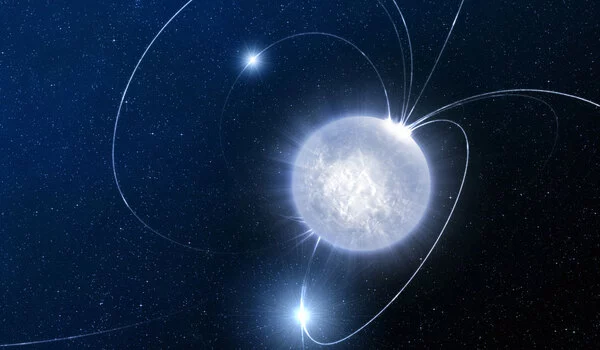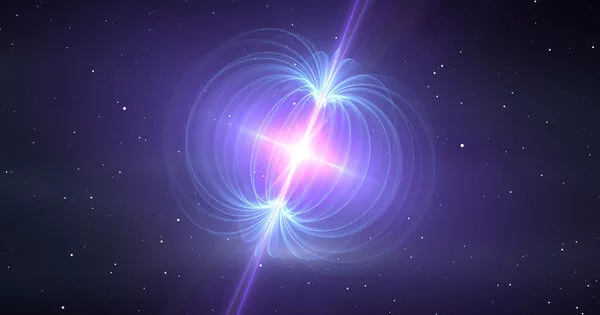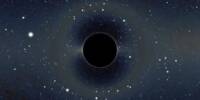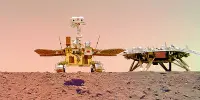Magnetars are the Universe’s most powerful magnets. These super-dense dead stars with extremely strong magnetic fields can be found all around our galaxy, but astronomers have no idea how they arise. Researchers have discovered a living star that is expected to become a magnetar using various telescopes across the world, including European Southern Observatory (ESO) facilities. This discovery indicates the discovery of a new form of celestial object, giant magnetic helium stars, and gives light on magnetar origins.
Despite being monitored for nearly a century, the star HD 45166’s enigmatic nature could not be easily explained by traditional models, and nothing was known about it other than the knowledge that it is one of a pair of stars [1,] is rich in helium, and is a few times more massive than our Sun.
“This star became a bit of an obsession of mine,” says Tomer Shenar, an astronomer at the University of Amsterdam in the Netherlands and the primary author of a research on this object published today in Science. “Tomer and I refer to HD 45166 as the ‘zombie star,'” explains Julia Bodensteiner, co-author and ESO astronomer located in Germany. “This is not only because this star is so unique, but also because I jokingly said that it turns Tomer into a zombie.”
This star became a bit of an obsession of mine. Tomer and I refer to HD 45166 as the ‘zombie star’. This is not only because this star is so unique, but also because I jokingly said that it turns Tomer into a zombie.
Tomer Shenar
Shenar had previously examined comparable helium-rich stars and believed magnetic fields could help solve the mystery. Indeed, magnetic fields are known to influence star behavior, which may explain why standard theories failed to represent HD 45166, which is located approximately 3000 light-years away in the constellation Monoceros. “While reading the literature, I had a eureka moment: ‘What if the star is magnetic?'” says Shenar, who is currently stationed at the Centre for Astrobiology in Madrid, Spain.
Shenar and his colleagues set out to investigate the star using various facilities around the world. The principal observations were made in February 2022 using a magnetic field detection and measurement device on the Canada-France-Hawaii Telescope. The team also relied on key archive data taken with the Fiber-fed Extended Range Optical Spectrograph (FEROS) at ESO’s La Silla Observatory in Chile.

Shenar then requested co-author Gregg Wade, an expert on magnetic fields in stars at the Royal Military College of Canada, to review the data. Wade’s remark verified Shenar’s suspicions: “Well, my friend, whatever this thing is — it is definitely magnetic.”
Shenar’s team discovered that the star has an extremely powerful magnetic field of 43,000 gauss, making HD 45166 the most magnetically massive star discovered to date [2]. “The entire surface of the helium star has a magnetic field almost 100,000 times stronger than Earth’s,” notes co-author Pablo Marchant, an astronomer at KU Leuven’s Institute of Astronomy in Belgium.This discovery represents the discovery of the first massive magnetic helium star. “It is exciting to uncover a new type of astronomical object,” says Shenar, “especially when it’s been hiding in plain sight all along.”
Furthermore, it hints at the genesis of magnetars, which are compact dead stars with magnetic fields at least a billion times stronger than the one in HD 45166. According to the team’s estimations, this star will die as a magnetar. As the star compresses due to its own gravity, its magnetic field strengthens, and the star finally becomes an extremely compact core with a magnetic field of roughly 100 trillion gauss [3] – the most powerful sort of magnet in the Universe.
Shenar and his colleagues also discovered that HD 45166 has a lower mass than previously estimated, around twice the mass of the Sun, and that its star pair orbits at a far greater distance than previously thought. Furthermore, their research indicates that HD 45166 formed through the merger of two smaller helium-rich stars. “Our findings completely reshape our understanding of HD 45166,” concludes Bodensteiner.
Notes
[1] While HD 45166 is a binary system, in this text HD 45166 refers to the helium-rich star, not to both stars.
[2] The magnetic field of 43,000 gauss is the strongest magnetic field ever detected in a star that exceeds the Chandrasekhar mass limit, which is the critical limit above which stars may collapse into neutron stars (magnetars are a type of neutron star).
[3] In this text, a billion refers to one followed by nine zeros and a trillion refers to one followed by 12 zeros.
















